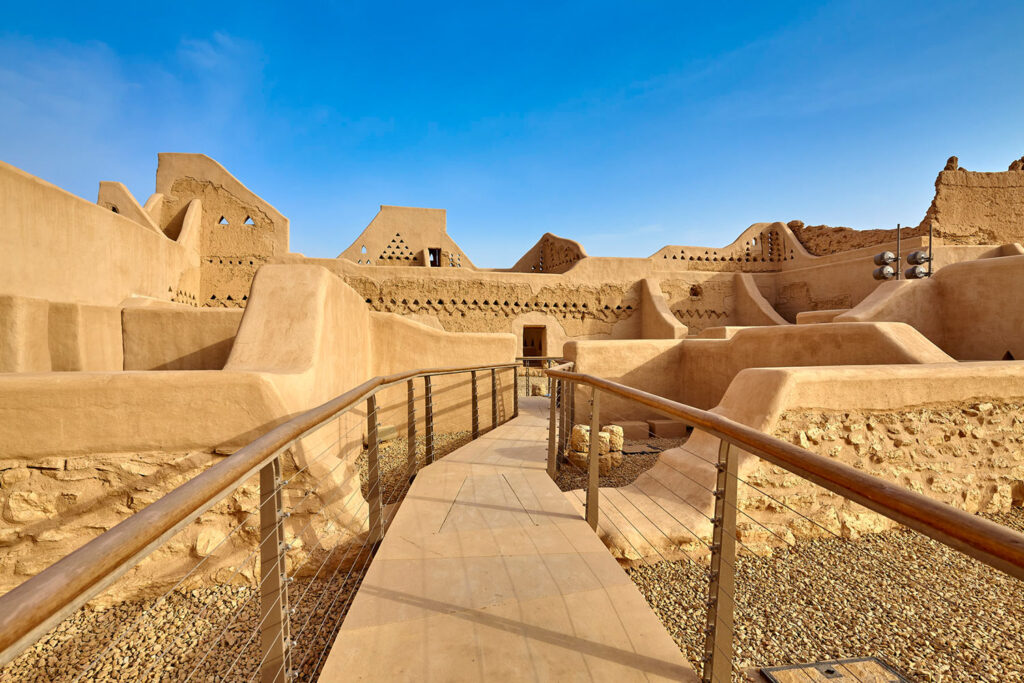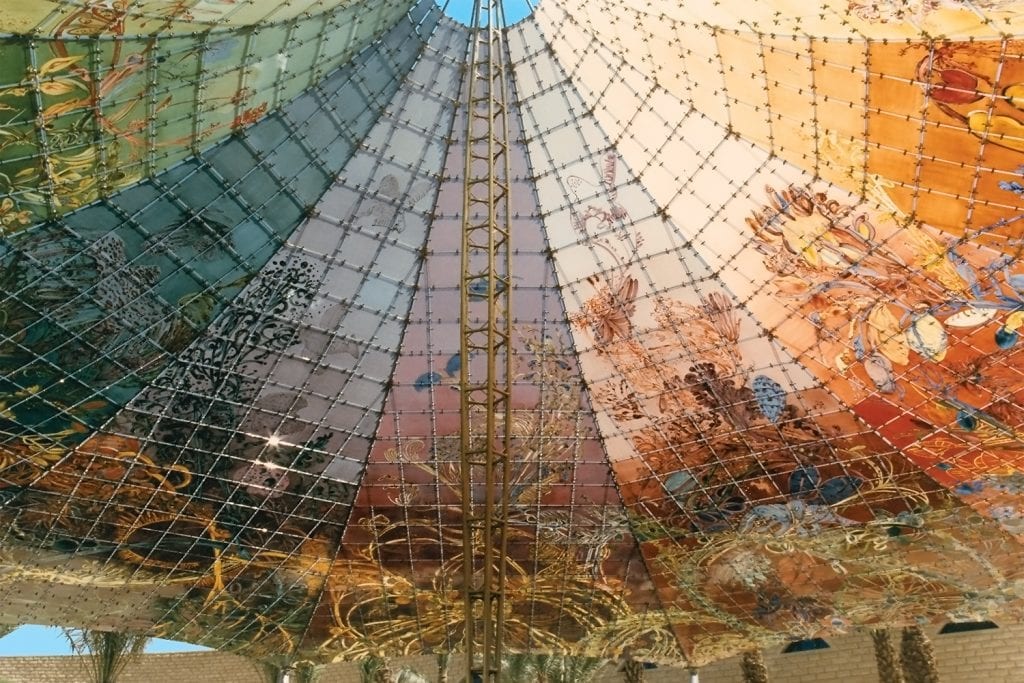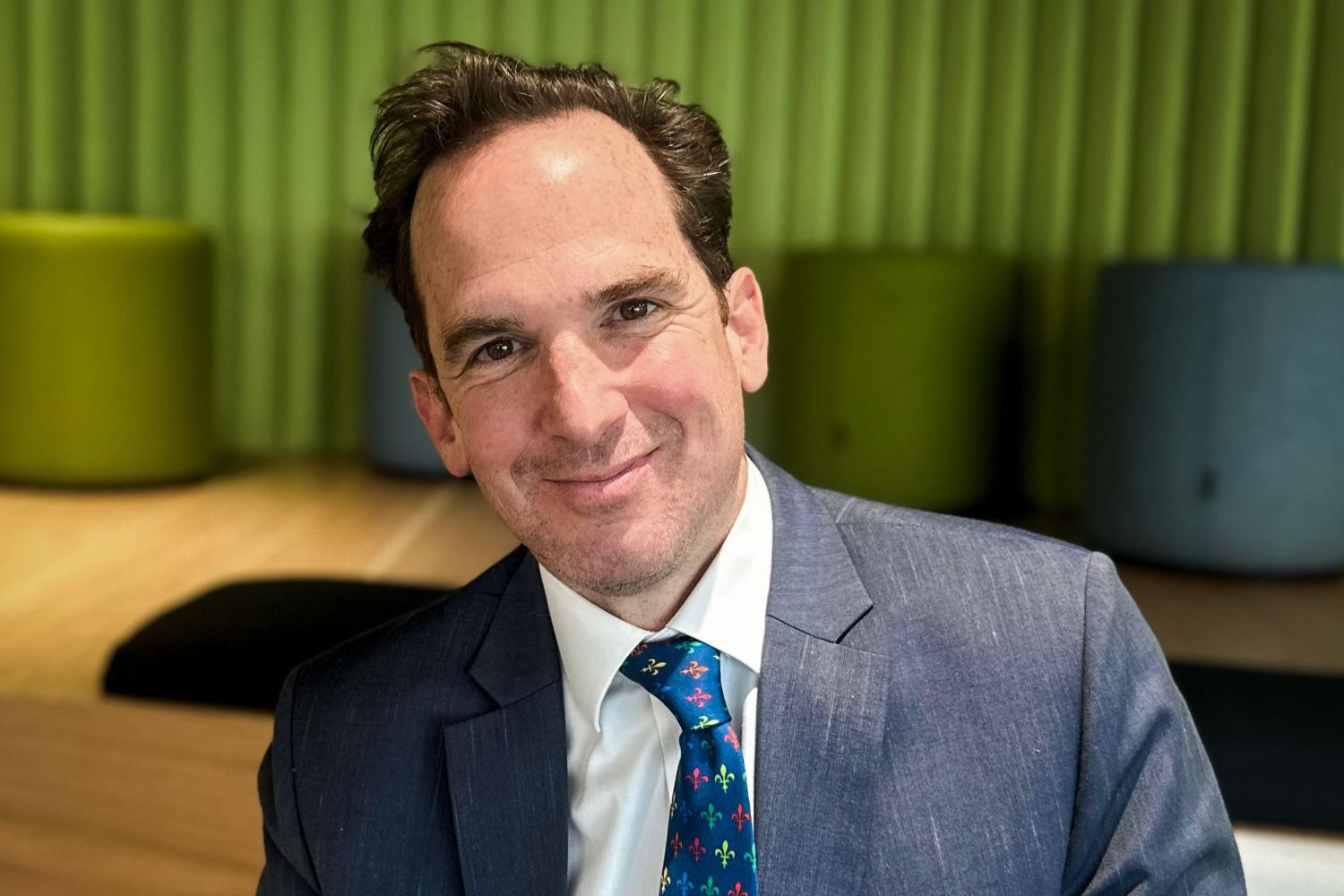Heritage across the Kingdom of Saudi Arabia is deeply rooted in centuries-old traditions. Now, as the Kingdom navigates its new position in a modernising world – driven by initiatives like Vision 2030 – heritage projects and activities are being reframed to both preserve the past and inspire future generations.
Buro Happold has played a key role in Saudi Arabia’s built environment for well over 40 years. We continue to diversify our skillset to widen our offering to clients. And now, we benefit from the capabilities of our director for culture and heritage, Adam Wilkinson.
With decades of experience in the heritage sector, Adam has brought his skillset and deep knowledge to Buro Happold as we continue to deliver on culture and heritage for our clients. Here, learn about his journey to Buro Happold, his views on the changing nature of heritage and how he plans to deliver for heritage clients in Saudi Arabia.
Adam’s professional journey
Adam is our director for culture and heritage in the advisory team, based in Riyadh. He joined Buro Happold in 2025 after 12 years working as director at Edinburgh World Heritage followed by four years as chief of heritage at Diriyah Gate Development Authority (DGDA), which included opening the At-Turaif World Heritage Site to the public. His passion for his area of specialism shines through – as does the potential that good heritage management can deliver to people and communities.
Adam now leads on all heritage projects in the region, bringing an integrated approach to heritage management at a time where heritage across the Kingdom is receiving an increased degree of attention and funding. He said, “The idea of heritage has not really been looked at in earnest and at scale until very recently, as part of a rediscovery of national identity.”
“The questions of ‘who are we’, ‘where are we from’ and ‘what does our future look like’ are key to this period of change as part of Vision 2030. This means there is a huge opportunity for effective, successful work in heritage across the Kingdom.
“In recent years there has been a shift in emphasis on what is considered as important for heritage, and the scale of what needs to be done is huge. Encouragingly, there is now money available for heritage work and a transformation in the way it is viewed, experienced and understood.”
Understanding heritage: a broader perspective
What does heritage mean, precisely? And how should it be framed in relation to the built environment? The answer to this question will depend on the heritage professional answering it, but Adam has clear ideas. He said, “My approach to heritage is to look at it in the broadest possible sense: I step away from the idea of prizing an individual object and instead think of it as the way on which objects, space and places have meaning and how they relate to each other – and to us.
“A shared emotional connection builds up into a sense of community and identity. Heritage is a lens through which to see the world in a certain way. It is a network of values across time and space, and a dialogue between the old and new.
“In my view, effective heritage work means breaking through traditional professional lenses and looking through the eyes of people who exist in and around those places and spaces now, understand what use it is to them, and understand the choices they make about those places.”

Being passionate about heritage work and history is one thing, but inevitably there are challenges as the landscape shifts. Adam said, “In heritage, there has traditionally been a gap between the language heritage professionals use and the way in which people actually relate to heritage.
“But I feel there has been a shift: as urbanisation continues at pace, there has been a move to understand the role of heritage assets, and to see that they can mean more than just bricks and mortar, or an architectural approach. When I think about my changing approach to heritage over my career – and especially since I moved to Saudi Arabia – I think my view has been expanded and widened.”
Because an integrated approach to heritage is relatively new here, it is an amazing opportunity to bake heritage considerations into the system
Adam Wilkinson, director for culture and heritage, Buro Happold.
The picture in heritage work in Saudi Arabia – and across heritage projects in the built environment more generally – is that we are in a period of transition and opportunity. Adam said, “I note the speed at which heritage work is happening, versus the availability of skills. Increasingly young people are coming through the field, but it takes time. That said, because an integrated approach to heritage is relatively new here, it is an amazing opportunity to bake heritage considerations into the system.”
Looking to the future: heritage at Buro Happold
Buro Happold is in a unique and favourable position regarding the services we can deliver to clients in Saudi Arabia. Since the 1960s, we have been active across the Kingdom, working on complex interdisciplinary projects that shape a changing country. From the Tuwaiq Palace in the 1980s to our ongoing involvement on the Riyadh Metro, we have played a critical role in a modern transformation of the country. Our embedding in Saudi Arabia means that we have developed an understanding of local practices, as well as bringing our global expertise.

For culture and heritage projects, our strategy is two-fold: for multidisciplinary projects that have a culture/heritage element, we can deal with all aspects in-house. And for projects that are primarily focused on heritage and culture, we have broad coalitions and experts across Buro Happold that can deliver precisely what the client needs – and perhaps, even more than they realised they needed. Adam said, “Because of Buro Happold’s wide litany of services, we are able to provide a much richer outcome.”
With Adam Wilkinson at the helm, heritage projects across Riyadh, Saudi Arabia and the wider Middle East are in good hands.
